

Take your response management to new heights.
Automate your processes using private generative AI, your content library, custom workflows, and more.
Work smarter. Achieve more.

Response management
Accurately answer RFPs, RFIs, and RFXs in minutes, using a comprehensive content library of your company’s information paired with private, generative AI.
Learn more
Security questionnaires
Automate your responses to complex security questionnaires—with utmost confidence that they’re compliant and accurate.
Learn more
DDQ completion
Accelerate DDQ completion with AI-powered response suggestions that are always up-to-date, accurate, and approved.
Make sales proposals a snap.
Sales proposals at scale. In seconds.
Quickly develop personalized sales proposals and presentations with knowledge base content you can easily customize.
Learn more
First drafts in minutes. Guaranteed.
RocketDocs simplifies managing repetitive questionnaires, saving you valuable time and effort—while ensuring accuracy.
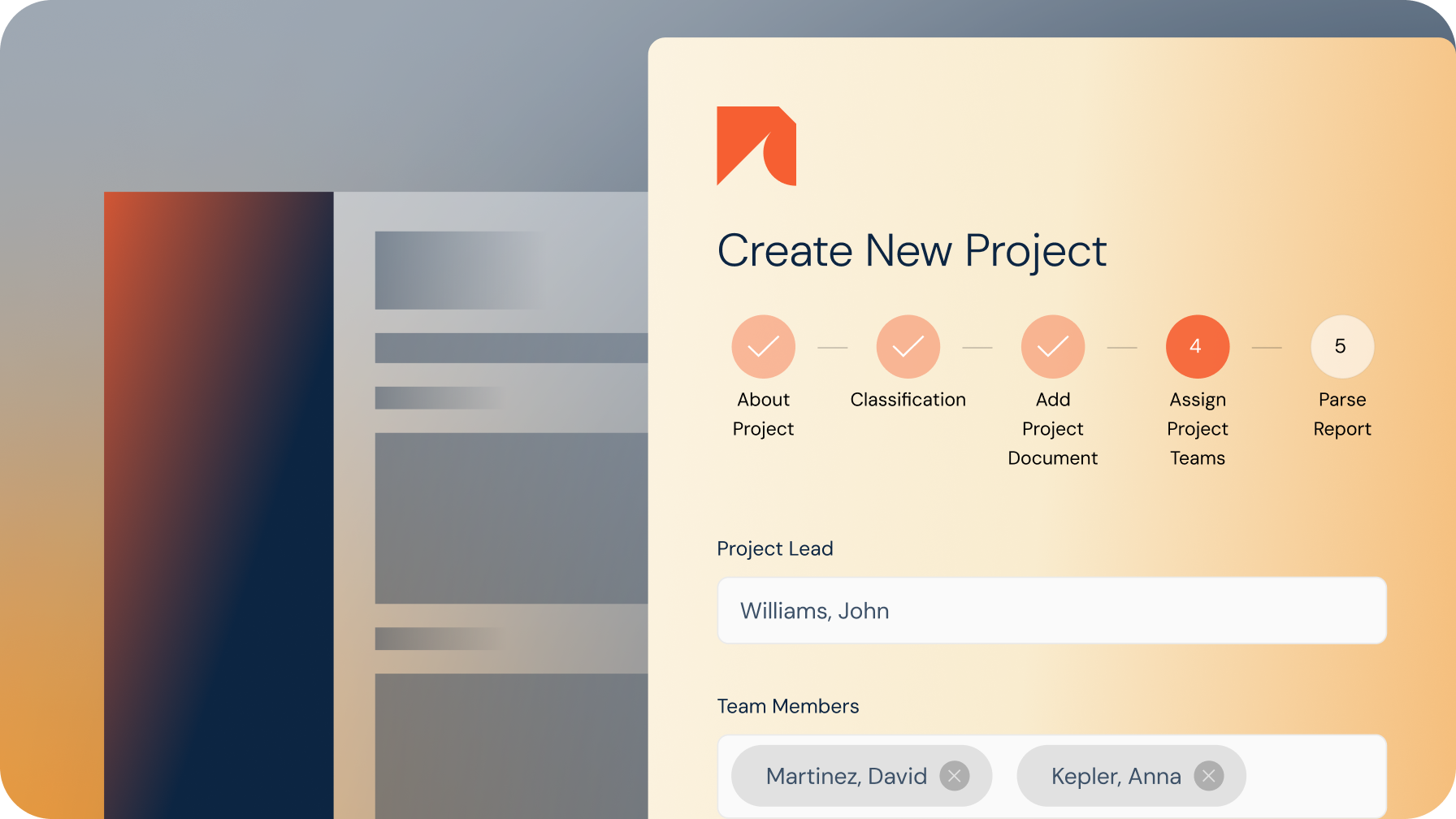
Upload your project
Start by logging the project and uploading your project document into RocketDocs. Whether it’s a questionnaire, a survey, or a form, RocketDocs is designed to parse the document, to identify questions, effortlessly.
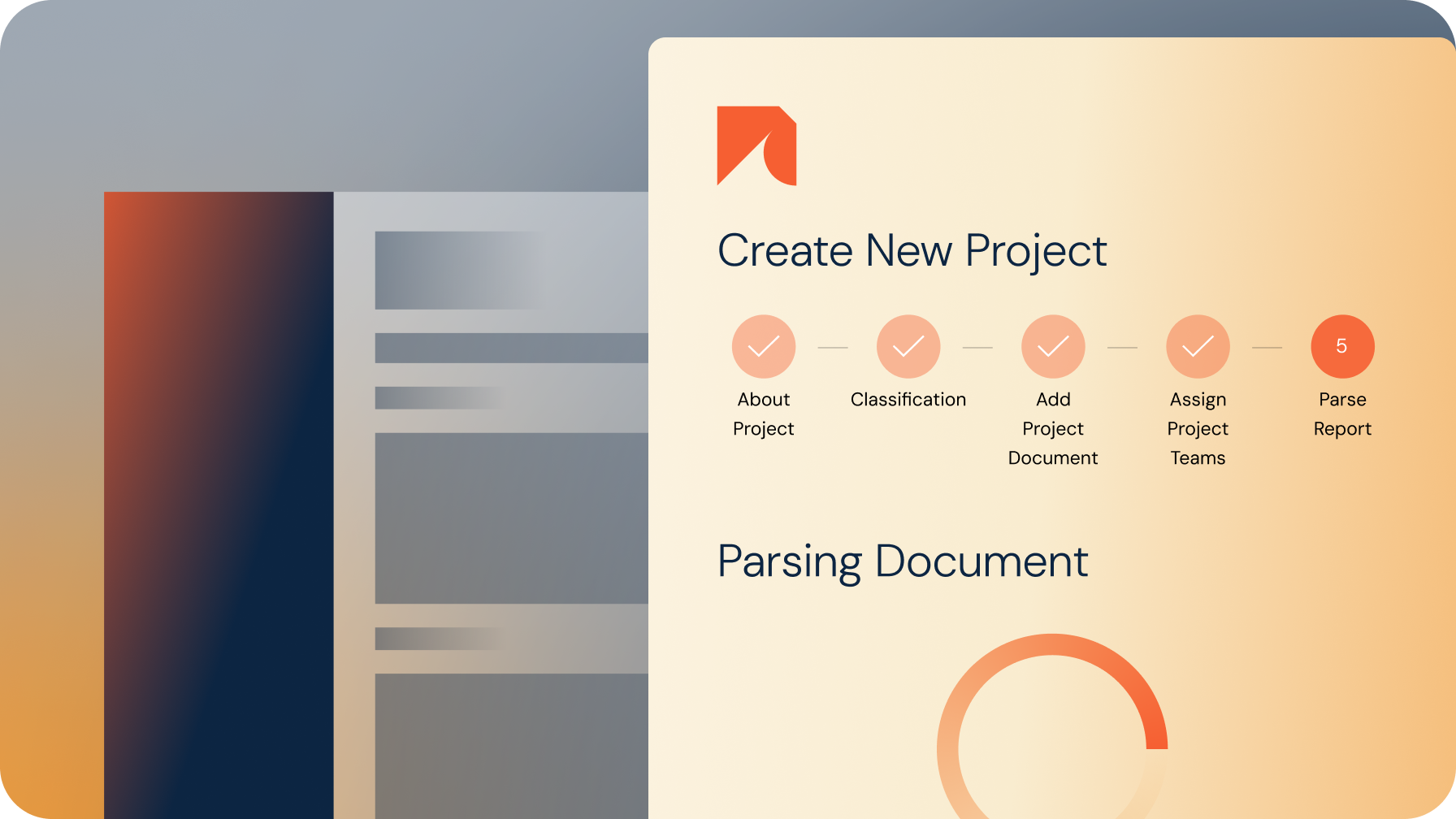
Auto-fill responses
RocketDocs automatically matches the questions with the most relevant responses in your knowledge base, ensuring that your responses are always up-to-date, accurate, and consistent.
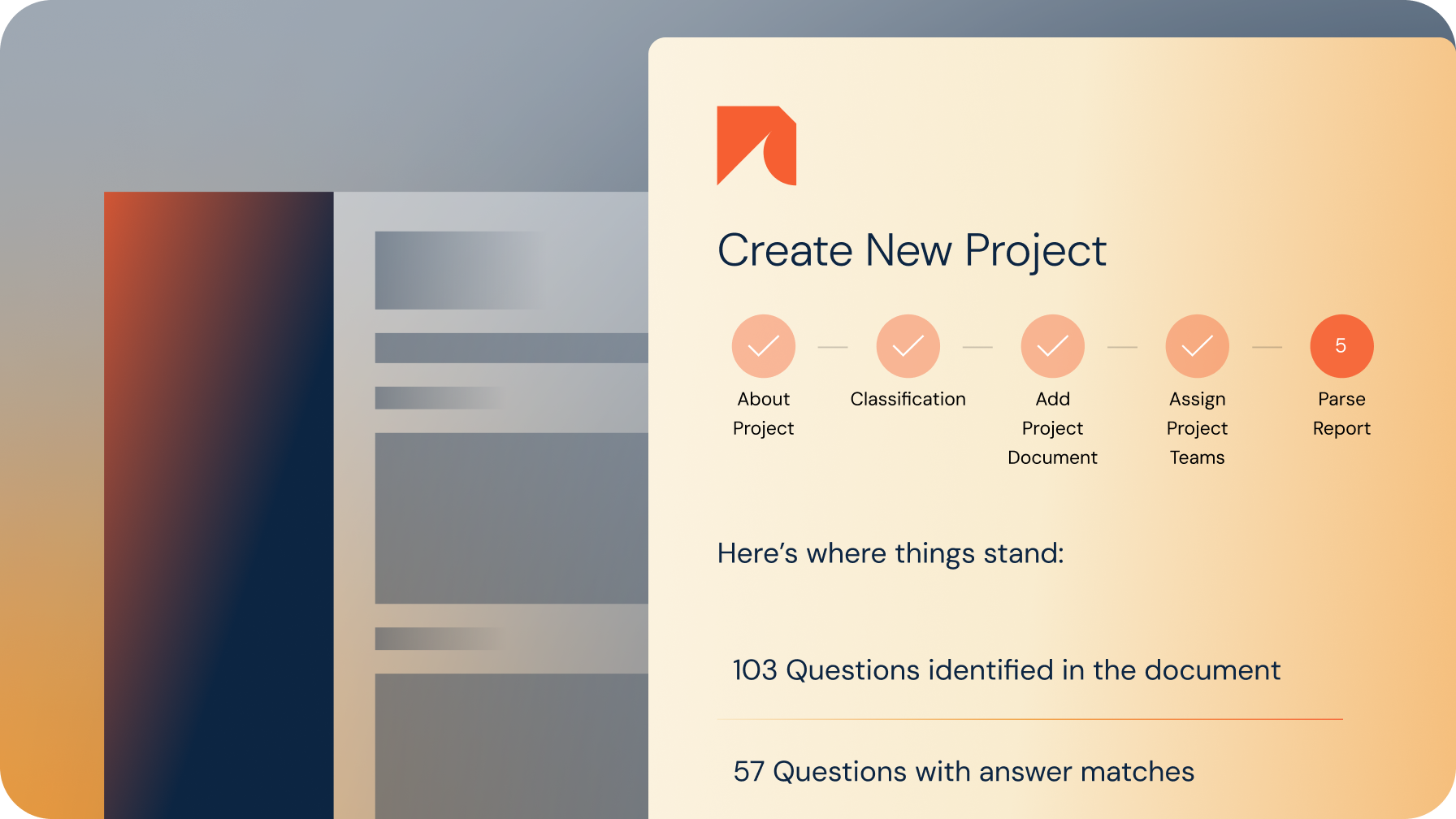
Let our 100% private AI fill in the blanks
Any questions that were not answered, will be put through our private AI engine to craft responses based on the information in your knowledge base. Generated responses are always highlighted for human review.

Get your first draft in minutes
RocketDocs gets you from start to a cohesive and polished first draft, ready for review in minutes.
The RocketDocs difference.
Our unique combination of features and value streamlines your workflows and elevates your efficiency.

100% Private AI
Our private, generative AI engine helps you quickly craft responses using information in your knowledge base. Your data never leaves our servers, and human approval ensures every AI-crafted message is spot-on. Boost efficiency without sacrificing accuracy or privacy.

Industry-leading security
We don't just talk security—we live it. Cutting-edge tools, military-grade encryption, and rigorous assessments help form a foundation of trust with our clients. Backed by SOC 2 and ISO 27001 certifications, we're not just secure—we're peace of mind, digitized.

Complete accuracy
Our project workflows, approval processes, and content review cycles—combined with timely email notifications—keep your content and responses up-to-date, compliant, and accurate.

Seamless integrations
RocketDocs integrates with Microsoft Office, Google Workspace, CRMs, and ERPs, allowing you to use the platform's powerful features while working in conjunction with the tools you are familiar with.
Fueling customer success.
Hear why customers love RocketDocs.
RocketDocs gives us a more streamlined approach to RFP creation, flow and completion. We have reduced our RFP writing time from two months to three weeks using the same team members in a collaborative manner.
Denise R.
Business Development Analyst
RocketDocs is currently solving the problem of how to work more efficiently with SMEs and have more timely updates to RFP response. With pre-set expiration dates and a click of a button, we have updates without having to pull entire spreadsheets and documents.
Marinella D.
Great platform. Having a main place to store all answers for all our products for our proposals and questionnaires. It makes it easy to find everything at one spot and users can access it in case the RFP specialist is out of the office.
Amy J.
Prepare for liftoff.
Explore our core features and functionality.
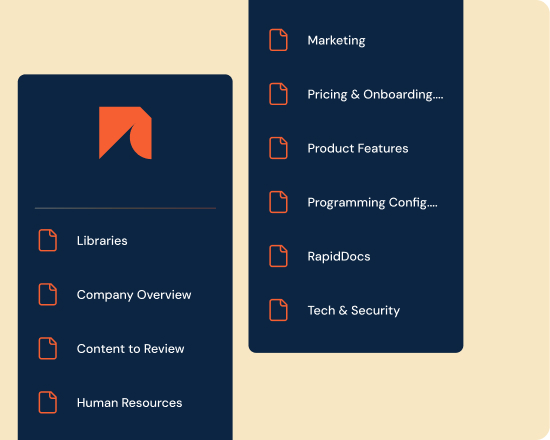
Content library
Put an end to content chaos, tedious internal research, and the back and forth you’re accustomed to, with a single source of truth.
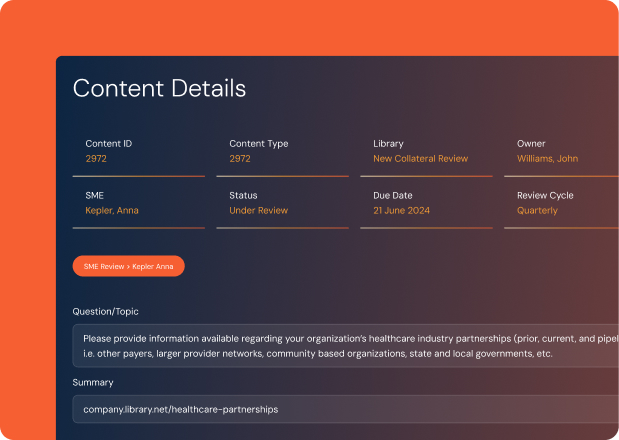
Content management
Set content review dates, use tags to segment content, and allow for easy search. Plus, audit and version tracking capabilities.
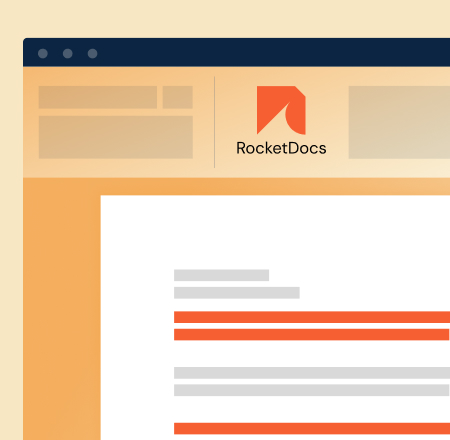
Integrations
Integrates with Microsoft Office and Google Workspace, as well as with your CRM or ERP software.
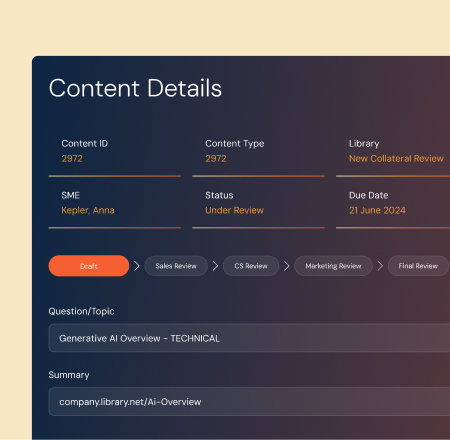
Project management
Manage projects with custom workflows and approvals, and make collaborating with SMEs easy.
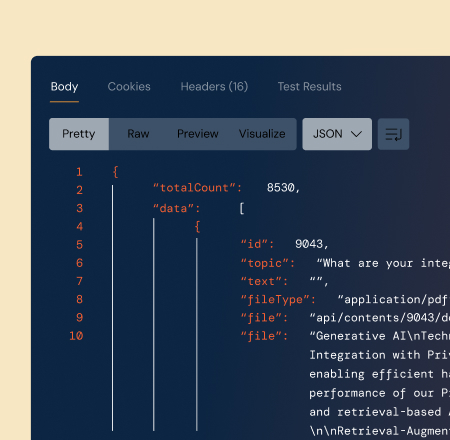
Open API
Leverage our Open API to access project information and content from anywhere, allowing seamless connection to 3rd party tools.
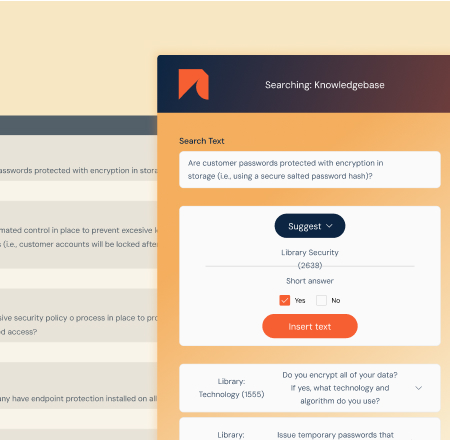
Browser extension
View approved content in your content library on any webform.
RocketDocs resource library.
Read our blogs, view the latest product releases, see case studies, and find product-related PDFs that can all support and supercharge your teams.

The Future of Work Whitepaper

Cybersecurity in the Age of Digital Transformation Whitepaper
